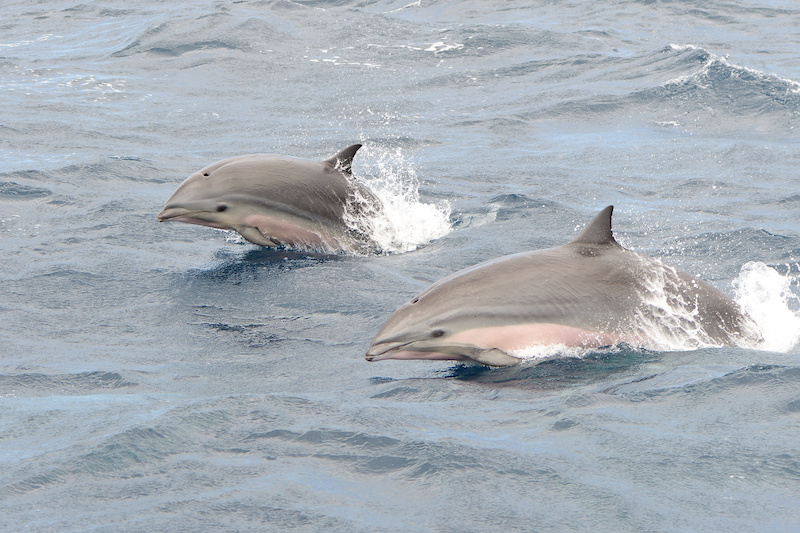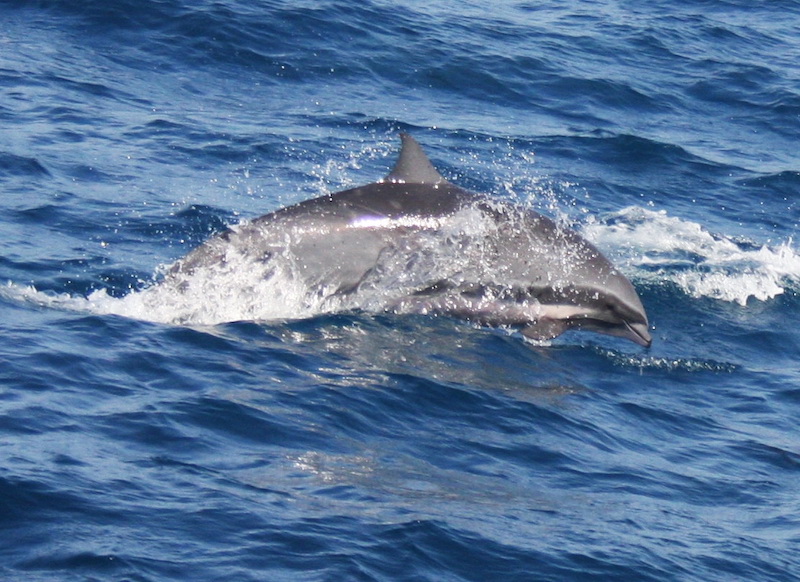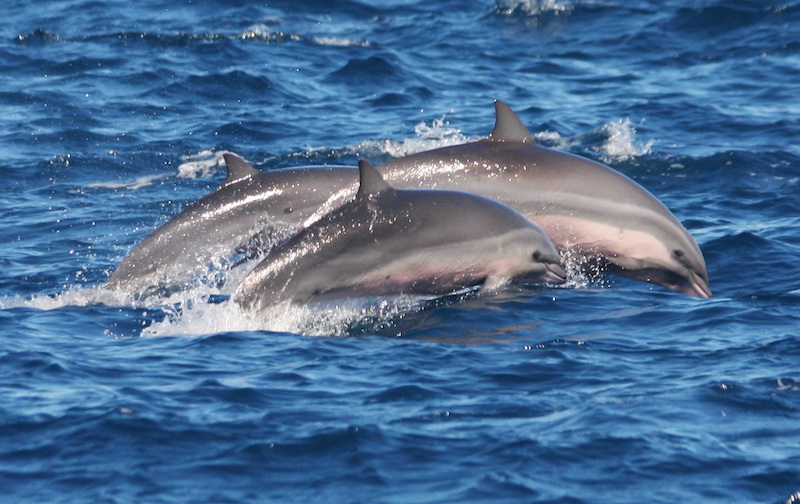
Fraser’s Dolphin, a mysterious inhabitant of tropical waters, remains a fascinating subject for marine life enthusiasts. This article delves into the world of this uncommon species, revealing its unique characteristics, habitat, reproductive habits, and diet. Discover why Fraser’s Dolphin captivates the attention of researchers and nature lovers alike.
Characteristics of Fraser’s Dolphin
Fraser’s Dolphin, scientifically named *Lagenodelphis hosei* or Borneo Dolphin, is a unique species in the Delphinidae family. Discovered in 1956, it is distinguished by a unique morphology: a robust and streamlined body, a very short rostrum, and small pectoral and caudal fins. Adults average around 2.30 meters, reaching up to 2.7 meters, with a weight ranging from 120 to 200 kg. Newborns measure about 1 meter and weigh 20 kg. Their lifespan is estimated at around 18 years.
In terms of appearance, Fraser’s Dolphin has a gray coat on the back, while its ventral side is rather cream and pink, with black pectoral fins. There is a noticeable morphological difference between males and females, especially in the shape of the dorsal fin. Males have a straight and triangular dorsal fin, while that of females is falciform. This species is capable of diving to impressive depths, sometimes around 1,000 meters, to feed. Fraser’s Dolphin moves in groups of 100 to 500 individuals, swimming in a highly synchronized manner, often associated with the Electra Dolphin. Its population, estimated at over 300,000 individuals, is stable and does not currently appear to be threatened.

Habitat of Fraser’s Dolphin
Fraser’s Dolphin, a fascinating marine species, primarily inhabits the deep and open waters of tropical and subtropical oceans. This pantropical species is found in an extensive area, ranging from latitudes 30°N to 30°S. Preferring depths greater than 500 meters, Fraser’s Dolphin is often observed in regions such as the Philippine Sea, tropical Pacific, and around the equator and the Caribbean. Its habitat, characterized by vast expanses of deep water, provides an ideal environment for hunting and reproduction.
Despite its presence in many regions, Fraser’s Dolphin remains a discreet and enigmatic species, often staying away from coasts and human activities. This preference for deep waters contributes to its survival by keeping it away from coastal threats and anthropogenic disturbances.
Reproduction in Fraser’s Dolphin
Reproduction in Fraser’s Dolphin involves unique and fascinating aspects. These marine mammals reach their sexual maturity between 5 and 10 years. Their reproductive cycle does not follow a specific season, allowing births throughout the year. Gestation lasts about 12 months, resulting in the birth of a single calf. This reproductive rhythm, with a new birth approximately every two years, ensures the maintenance and growth of the population.
Calves are born with a size of about 1 meter, weighing 20 kg, and they depend on their mother for food and protection during their first months of life. This period of dependence is crucial for their survival and learning the skills necessary for life in the marine environment. The reproduction of Fraser’s Dolphin, although not highly visible due to their offshore habitat, plays an essential role in the sustainability of the species.

Diet of Fraser’s Dolphin
The diet of Fraser’s Dolphin is varied and adapted to its offshore environment. This species is an oceanic predator that primarily feeds on fish, crustaceans, and cephalopods. Its ability to dive to considerable depths, sometimes around 1,000 meters, allows it to access a wide variety of prey in the deep zones of the ocean. Fraser’s Dolphin hunts in groups, demonstrating a collective and efficient feeding strategy. This group hunting method not only enables them to capture prey more effectively but also provides protection against potential predators.
Their diet plays a crucial role in maintaining the balance of marine ecosystems by helping regulate the populations of their prey. This diversified diet is also an indicator of the health and richness of the oceans, reflecting the availability of food resources in their natural habitat. In summary, the diet of Fraser’s Dolphin is a key element in its survival and adaptation in the vast marine expanses.
Discover all the cetacean species that can be found near the coasts of Martinique: